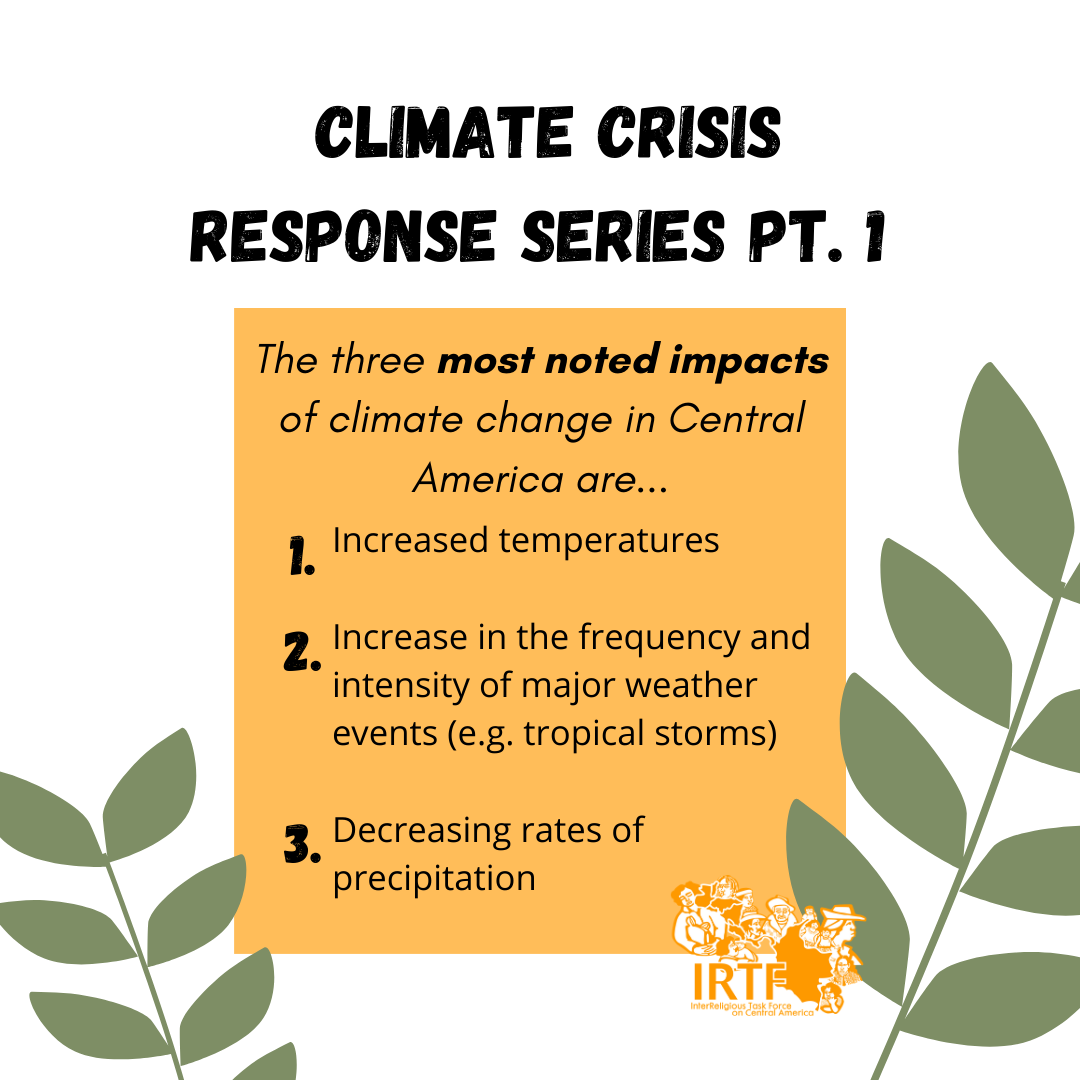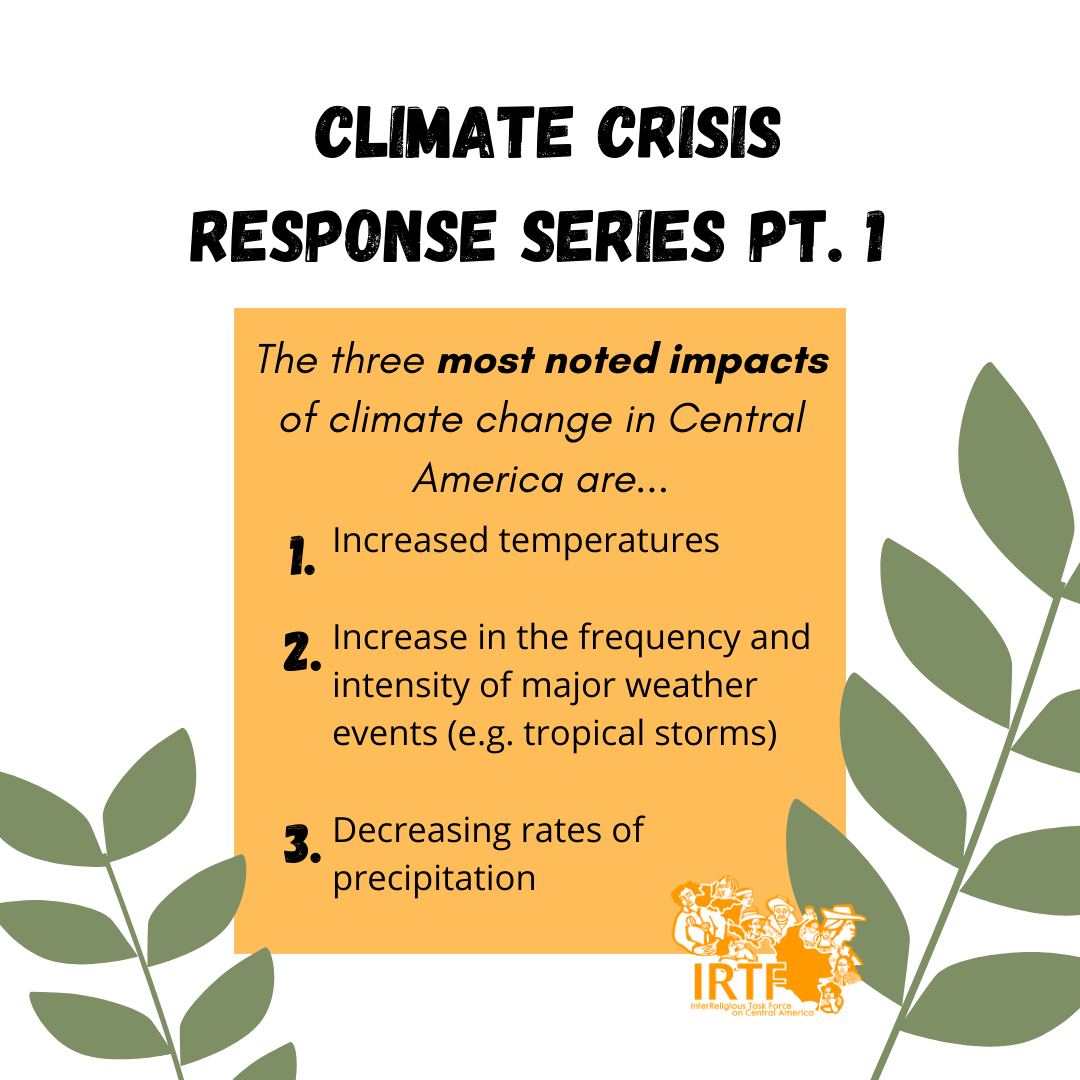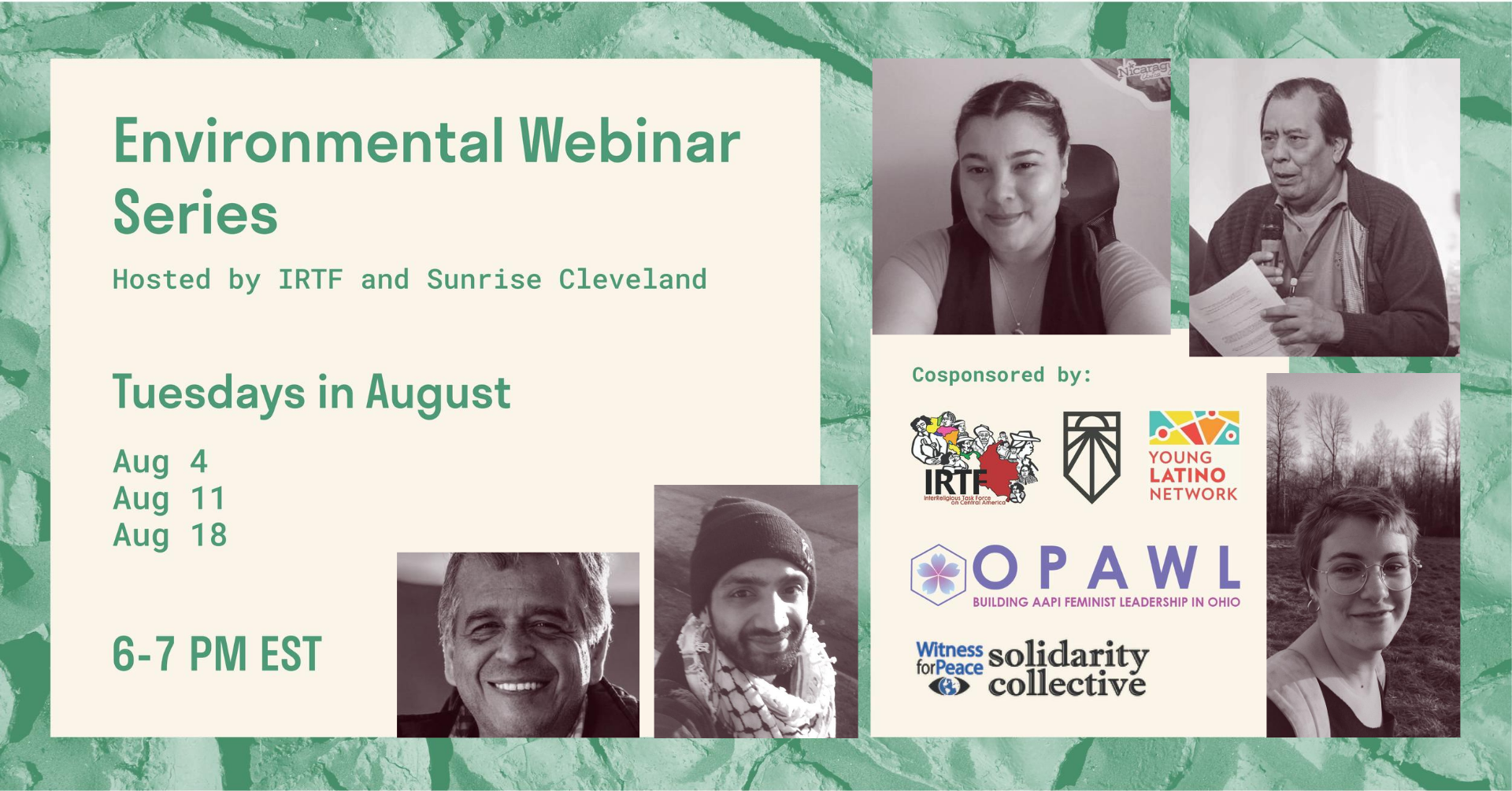- Home
- About Us
- Issues
- Countries
- Rapid Response Network
- Young Adults
- Get Involved
- Calendar
- Donate
- Blog
You are here
Nicaragua: News & Updates
Nicaragua was ruled by the Somoza dictatorship, backed by the US, for 30 years. After the Sandinista Revolution took control in 1979, the US assembled former Somoza National Guardsmen into a counterrevolutionary force that, for the next decade, terrorized the civilian population in an attempt to weaken popular support for the Sandinistas. The “contra war” left 30,000 people dead and forced more than 100,000 to seek refuge in the US.
Learn more here.
News Article
September 2, 2020
We have already emitted enough greenhouse gases (GHGs), such as CO2, to change the very composition of our atmosphere. Scientists, researchers, policymakers, and governmental officials alike know this; they know that the effects of climate change are occurring now and will continue into the not-so-distant future. We now face the question: will we act now to limit the consequences of climate change by reducing emissions or continue with the status quo and suffer the consequences?
Content Page
September 1, 2020
In this series of infographics we explore the ways in which the climate crisis is impacting Central Americans and Colombians, how they are adapting, and how this crisis has created a surge of climate migration.
News Article
August 12, 2020
Although the effects of climate change reverberate around the globe, its effects vary from region to region, continent to continent, and Central America is no exception. // Aunque los efectos del cambio climático repercuten en todo el mundo, sus efectos varían de una región a otra y de un continente a otro, y Centroamérica no es una excepción.
Content Page
August 4, 2020
As we address the climate crisis, it is imperative that we reject capitalist, extractivist, imperialist models of interaction at all levels: interpersonal, national, and international. Join us as we discuss our collective liberation and the end of colonialist corporate control through systems of racism, classism, and patriarchy.
News Article
June 18, 2020
Some 650,000 DREAMers are temporarily safe from deportation (at least for now) because of today’s Supreme Court ruling against the Trump administration. Chief Justice John Roberts cast the deciding vote when he joined the court's four liberal justices. Their ruling: the 2017 decision by DHS (Department of Homeland Security) to rescind DACA was arbitrary and capricious under the Administrative Procedure Act. This is an unexpected and positive ruling, but the fight on behalf of the DREAMers is far from over. DACA recipients have gotten advanced degrees; they have started businesses; they have bought houses, had children who are U.S. citizens; and 90% have jobs. Some 29,000 DREAMers are health care professionals. It’s no surprise that the majority of people in the US want the DREAMers to stay. But this won’t happen until Senator Mitch McConnell introduces the American Dream and Promise Act onto the Senate floor. The bill, which would give permanent legal status and path to citizenship for the DREAMers, was passed by the US House with an overwhelming majority on June 4, 2019. The Senate has stalled, refusing to take up this crucial piece of legislation.
News Article
April 28, 2020
The world should not praise Honduras and condemn Nicaragua for their very different responses [to the coronavirus], while ignoring the results in the numbers so far. Honduras, the United States, and Nicaragua seem to present different ways of dealing with…marginalized people. Nicaragua is tailoring its response to them, perhaps too much so, perhaps not. The U.S. is ignoring them. Honduras is persecuting them. The mainline media seem insensitive to cultural differences and marginalized people, and the media often fail to take account of inequalities. So far, the Nicaraguan strategy of emphasis on education and prevention and an open society with monitored borders seems to be working better than the iron hand strategy of the Honduran government. Berta Oliva, director of the Committee of the Families of the Detained/Disappeared in Honduras (COFADEH), a major human rights organization, and other human rights leaders have accused the government and the military of using the pandemic as an opportunity to tighten control of the population through fomenting fear of the virus and imposing draconian state-of-siege measures. Keeping people in a precarious state serves the interests of a government that many Hondurans call a “dictatorship.”
RRN Case Update
April 1, 2020
January, February, and March RRN case summaries at a glance
On behalf of our 190 Rapid Response Network members, IRTF volunteers write and send six letters each month to government officials in southern Mexico, Colombia, and Central America (with copies to officials in the US).
Who is being targeted? indigenous and Afro-descendant leaders, labor organizers, LGBTI rights defenders, women’s rights defenders, journalists, environmental defenders, and others.
By signing our names to these crucial letters, human rights crimes are brought to light, perpetrators are brought to justice and lives are spared. Our solidarity is more important than ever. Together, our voices do make a difference.
News Article
March 1, 2020
Father Ernesto Cardenal was an early supporter of the Sandinista National Liberation Front, which was founded in the early 1960s, named after Augusto César Sandino, the revolutionary who had led a guerrilla campaign against the U.S. occupation of Nicaragua in the 1920s and ’30s and was assassinated in 1934. “Christ led me to Marx,” Father Cardenal said in an interview in 1984. “I don’t think the pope understands Marxism. For me, the four gospels are all equally communist. I’m a Marxist who believes in God, follows Christ, and is a revolutionary for the sake of his kingdom.” In 2015 he told The New York Times: “The Bible is full of revolutions. The prophets are people with a message of revolution. Jesus of Nazareth takes the revolutionary message of the prophets. And we also will continue trying to change the world and make revolution. Those revolutions failed, but others will come.”
RRN Case Update
February 13, 2020
RRN case summaries at a glance
On behalf of our 190 Rapid Response Network members, IRTF volunteers write and send six letters each month to government officials in southern Mexico, Colombia, and Central America (with copies to officials in the US).
Who is being targeted? indigenous and Afro-descendant leaders, labor organizers, LGBTI rights defenders, women’s rights defenders, journalists, environmental defenders, and others.
By signing our names to these crucial letters, human rights crimes are brought to light, perpetrators are brought to justice and lives are spared. Our solidarity is more important than ever. Together, our voices do make a difference.
News Article
February 5, 2020
The Cleveland Immigration Working Group is engaged in a number of immigrant defense and support activities. We need more volunteer help. Please read below and consider helping with some of these needs: A. Safe Hotels Campaign B. Rapid Response Team C. Bond Packets for Release from Detention D. Court Monitoring E. Bus Reception F. Public Actions G. Sponsor Families H. Help for ICE Raid Victims and those in detention I. Prayer Support . If you would like to learn more about any of these initiatives, please email irtf@irtfcleveland.org or call (216) 961 0003.




